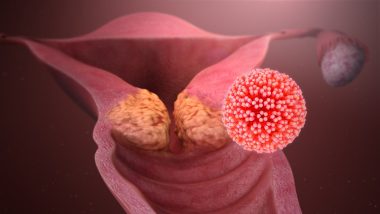Ground-breaking research which allows for the detection of cancer cells in the human body in just ten minutes has been published by Australia’s University of Queensland.
The study published by Nature Journal on Tuesday says Queensland researchers have created a simple test which uses a colour-changing fluid to confirm the presence of cancerous cells anywhere in the body. The test has a sensitivity of about 90%, meaning it would detect about 90 in 100 cases of cancer.
The test was developed after the research team discovered that within cells cancerous DNA and normal DNA stick to metal surfaces in markedly different ways when placed in water.
The sign of healthy cells is marked by the patterning of their DNA with molecules called methyl groups. In cancerous cells, this patterning undergoes a change so that only genes that help the cancer grow are switched on. While the DNA inside normal cells has methyl groups dotted all over it, the DNA inside cancer cells is largely bare, with methyl groups found only in small clusters at different locations. The research says, "This methylation landscape that we referred to as Methylscape is displayed by most cancer types, thus may serve as a universal cancer biomarker."
Matt Trau, a professor at the University of Queensland, said: "Discovering that cancerous DNA molecules formed entirely different 3D nanostructures from normal circulating DNA was a breakthrough that has enabled an entirely new approach to detect cancer non-invasively in any tissue type including blood.
"This led to the creation of inexpensive and portable detection devices that could eventually be used as a diagnostic tool, possibly with a mobile phone."
Explaining in the journal article, the Queensland team said their tests confirmed the above described behavioral pattern of methyl groups in breast, prostate, colorectal cancer as well as lymphoma.
The test is however in a nascent stage and requires further development as it can currently only determine the presence of cancer, but not the disease type, location or its progression. The test also needs to be tested with various other types of cancer as it has currently has been tested only on the four most common ones. As of 2018, there are more than 200 types of cancer.
The test once fully vetted through multiple clinical trial rounds can hence become the starting point for diagnosis as it could be conducted at most pathology labs and would answer the question: does this patient have cancer?
(The above story first appeared on LatestLY on Dec 06, 2018 03:31 AM IST. For more news and updates on politics, world, sports, entertainment and lifestyle, log on to our website latestly.com).













 Quickly
Quickly





















